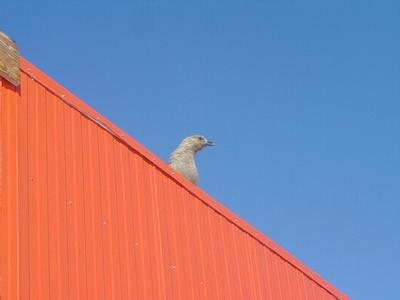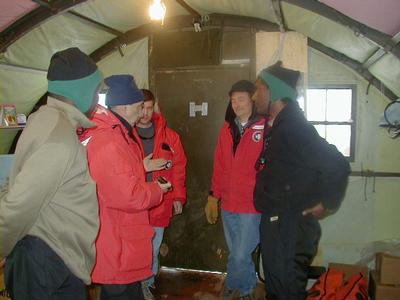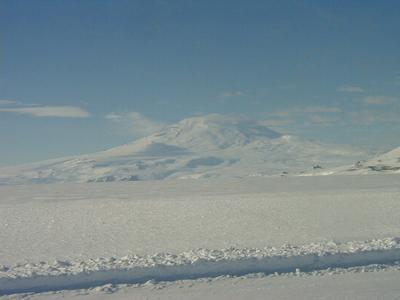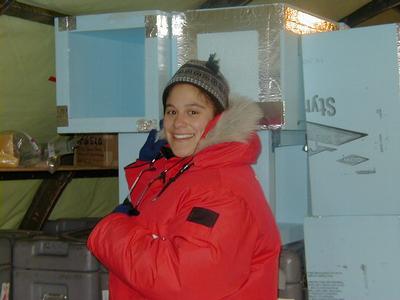13 November, 2001
Nov 13th-Altitude School
Temperatures: High 18 F, Low 3F, Wind Chill -34 F
I am not feeling that well at the moment. It is very common for people to
get down here and get a cold. In the summer there are over 1,000 people.
All it takes is for a few of those people to bring a cold with them from the
U.S. Then the germs are here and traveling from person to person. Patrick
was so great and let me sleep in today. I slept for 10 hours!! I have been
so tired. Maggie is also not feeling well. Patrick believes that it is
vital to take care of oneself and not let the cold get worse. I'm glad for
that!
This afternoon we had Altitude School. It was very interesting. Since we
will take day trips to the polar plateau and seven members of our team will
spend two weeks there (no one has decided who is going to do that yet), we
had to learn all about the effects of being up high. One area where we will
be installing seismometers is on the plateau (a large, flat, ice covered
area) at about 10,000 ft. The barometric pressure is lower in the Polar
Regions. Because of this, it feels higher than the actual altitude. Up at
10,000 ft it will feel like 12,000 ft or higher! Also, it is extremely windy
and cold on the plateau. The temperature can easily reach -40 F!
The higher up one goes, the less oxygen there is in the air to breathe.
People can develop different types of altitude sickness while up very high.
Sometimes the sickness can be fatal if the person is not brought back down
quickly enough! Altitude affects everybody differently. Even the most
physically fit and healthy person can get severe altitude sickness. The only
way to find out how it affects you is to go to up high.
I am scheduled to go on a day trip to the polar plateau this week. We will
be taken up there by a Twin Otter Engine plane. We will spend at least four
hours servicing a seismometer that was installed last year. When I go there,
I will bring all of my ECW gear. I also have special hand and toe warmer
packets that stay warm for about seven hours. I am really excited about this
day trip-a little nervous about the cold, but eager to see the plateau.
At the end of November some of our team will spend two weeks on the plateau
at TAMCAMP. This is the first time a field camp is being set up at this
parcticular spot on the plateau. Because the group will spend so much time up
there, there are support people who will go up in advance and set up the
camp. There will be a few huts set up that are like the Jamesway where we
work each day. They will be heated. However, team members will sleep in a
tent with no heat!
In order to deal with high altitude, it is very important to allow the body
time to acclimatize (get used to the lack of oxygen). TAMCAMP members will
be required to spend the first three days up at camp resting, eating and
taking in extra oxygen. This is required to help prevent or limit altitude
sickness. If someone should get severe altitude sickness while up there, a
rescue plane will come to bring them back down to McMurdo. While waiting to
be picked up, the sick person will be put in a special bag called a Gamow.
This bag when pumped up makes the person feel like he or she is at a lower
altitude. While this bag doesn't cure the person, it makes them more
comfortable until help arrives.

This is an Antarctic bird called a skua (pronounced "skooa")

From left to right: Rigobert, Patrick, Jesse, Doug, Sridhar

Mount Erebus, an active volcano in Antarctica! It is over 12,000 ft high.

Do I look tired or what??
Contact the TEA in the field at
.
If you cannot connect through your browser, copy the
TEA's e-mail address in the "To:" line of
your favorite e-mail package.
|
